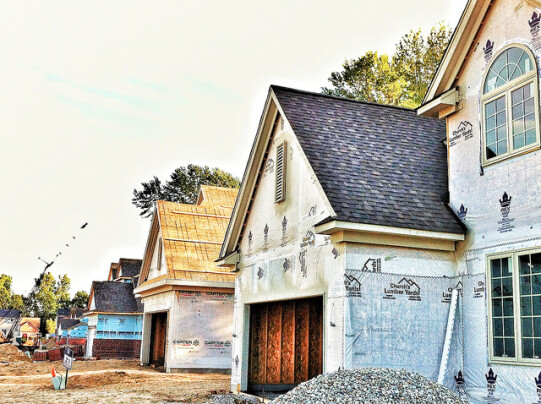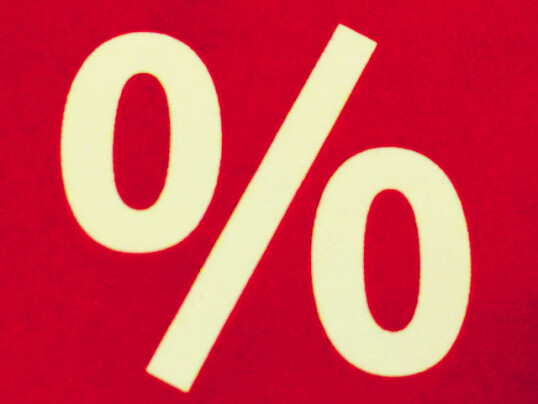In an interconnected world, events in other countries have an effect on our economy. That’s certainly the case these days, according to Fannie Mae’s Economic and Strategic Research Group’s latest monthly outlook. According to the group, the Russian invasion of Ukraine, along with existing supply-chain issues, has caused considerable downside risks to the U.S. economy and housing market. Fortunately for home buyers and sellers, though, Doug Duncan, Fannie Mae’s senior vice president and chief economist, says the housing market should weather those risks more easily than other markets. “Housing is currently acting as support to an otherwise slowing economy, although it is adding significantly to inflation,” Duncan says. “Even as interest rates are rising and reducing affordability, demographics are still strong supports for demand, and the paucity of existing home supply is supporting new construction and sales.” Duncan believes demand for home purchase loans should hold up well in the current environment and adds that, even with rates rising, they’re still well below what’s been considered normal historically. (source)
Archive for March 2022
Challenges Unlikely To Derail Housing Market
Home Sales Slip Despite Inventory Gains
Sales of previously owned homes fell in February, according to the National Association of Realtors. Sales were down 7.2 percent from the month before and 2.4 percent from last year at the same time. There were a number of factors that likely contributed to the decline, including higher mortgage rates and a lower than normal number of homes for sale. But while challenges remain, there are signs a better balanced market may be on the way. Lawrence Yun, NAR’s chief economist, says inventory is beginning to improve. “The sharp jump in mortgage rates and increasing inflation is taking a heavy toll on consumers’ savings,” Yun said. “However, I expect the pace of price appreciation to slow as demand cools and supply improves somewhat due to more home construction.” He may be right. Recent data shows that not only has the pace of new home construction increased so far this year, but the number of existing homes for sale in February rose as well. Still, the typical property was only on the market 18 days during the month, down a day from January. That means buyers still need to be prepared for a fast-moving market. (source)
New Home Construction Spikes In February
The housing market needs more homes. They are plenty of buyers but not enough houses for sale. That leads to higher prices and more competition for available listings. Fortunately, though, new home construction is expected to increase this year and, according to newly released numbers from the U.S. Census Bureau and the Department of Housing and Urban Development, it already has. Their February new residential construction report shows the number of homes that began construction during the month was 22 percent higher than last year. Additionally, the number of single-family homes that completed construction was 12 percent higher than the month before. That’s good news for the market and potential home buyers, as new home construction is the quickest solution to the market’s inventory problem. If the trend continues, and more new homes become available for sale, it’ll help relieve upward pressure on home prices and give buyers more options when shopping for a home to buy. (source)
Economic Uncertainty Causes Rate Volatility
According to the Mortgage Bankers Association’s Weekly Applications Survey, average mortgage rates increased last week from one week earlier. Rates were up for 30-year fixed-rate loans with both conforming and jumbo balances, loans backed by the Federal Housing Administration, and 15-year fixed-rate loans. The increase follows a decline the week before, the first in 12 weeks. Joel Kan, MBA’s associate vice president of economic and industry forecasting, says recent rate fluctuations have been caused by several factors. “Mortgage rates continue to be volatile due to the significant uncertainty regarding Federal Reserve policy and the situation in Ukraine,” Kan said. “Investors are weighing the impacts of rapidly increasing inflation in the U.S. and many other parts of the world against the potential for a slowdown in economic growth due to a renewed bout of supply-chain constraints.” Despite the volatility, though, demand for loans to buy homes was up 1 percent week-over-week. The MBA’s survey has been conducted since 1990 and covers 75 percent of all retail residential mortgage applications. (source)
The Features Home Buyers Want Most
For the most part, homes are all the same. They all have a kitchen, bedrooms, bathrooms, and a main living area. Those are givens. Aside from the number and size, those rooms aren’t what get buyers excited, though. For home buyers, the things that really set a listing apart are the details, bonus rooms, and style of a house. A home’s features and aesthetic can make it sell faster and at a higher price than other homes, even in the same area. But what are the features that today’s home buyer desires most? Well, according to one recent analysis, there are several. Among the top features that buyers will pay more for, a steam oven tops the list, followed by modern farmhouse or nautical style, new appliances, shiplap, and a strong internet connection/access to broadband. A metal roof, heated floor, and a dog house also make the top 10 features that have homes selling at a premium. The top feature that will sell a home faster is seismic retrofitting – which makes a home more resistant to earthquakes. Other desired features that lead to quick sales are an EV charging station, drought-resistant landscaping, midcentury style, and a home office. (source)
Low Inventory May Benefit Spring Sellers
Spring is well known as the time of year when the housing market heats up. After waiting out the winter, home buyers return and begin hunting for a home to purchase. Naturally, the increasing number of interested buyers also makes spring a good time for homeowners who want to sell. And this year, home sellers may have even more reason to get ready for spring. According to a recent analysis from the National Association of Realtors’ consumer website, the number of homes available for sale remains historically low, and that could be a big benefit to spring sellers. After all, low inventory means more interested buyers per available listing. But market conditions aren’t fixed. For example, the number of listed homes typically increases almost 20 percent by mid-August. Along with the usual increase in listings, home builders are expected to ramp up construction this year, adding additional inventory to the housing stock. That means, later in the year, inventory may improve, giving buyers more choices and more negotiating power. That’s why homeowners who list this spring may be doing so at the best time this year to sell a home. (source)
Lenders Expect Buyer Demand To Remain Stable
Increasing mortgage rates have prospective home buyers concerned about affordability. But while higher rates may have buyers calculating costs, mortgage lenders don’t expect they’ll deter Americans from shopping for a home this year. In fact, according to Fannie Mae’s most recent Mortgage Lender Sentiment Survey, participating lenders expect buyer demand to remain largely stable, despite rising rates. Doug Duncan, Fannie Mae’s senior vice president and chief economist, says there are a number of unknowns that will impact conditions in the months ahead. “Numerous uncertainties, including heightened inflation and the Fed’s monetary policy reaction, which must now also account for the inflationary impact of Russia’s war on Ukraine, suggest increased market volatility, but the general underlying, upward rate trend aligns with lenders’ expectations,” Duncan says. Despite the upward trend, however, the share of lenders expecting purchase demand to grow over the next three months climbed significantly from last quarter, though it remains lower than years past. (source)







